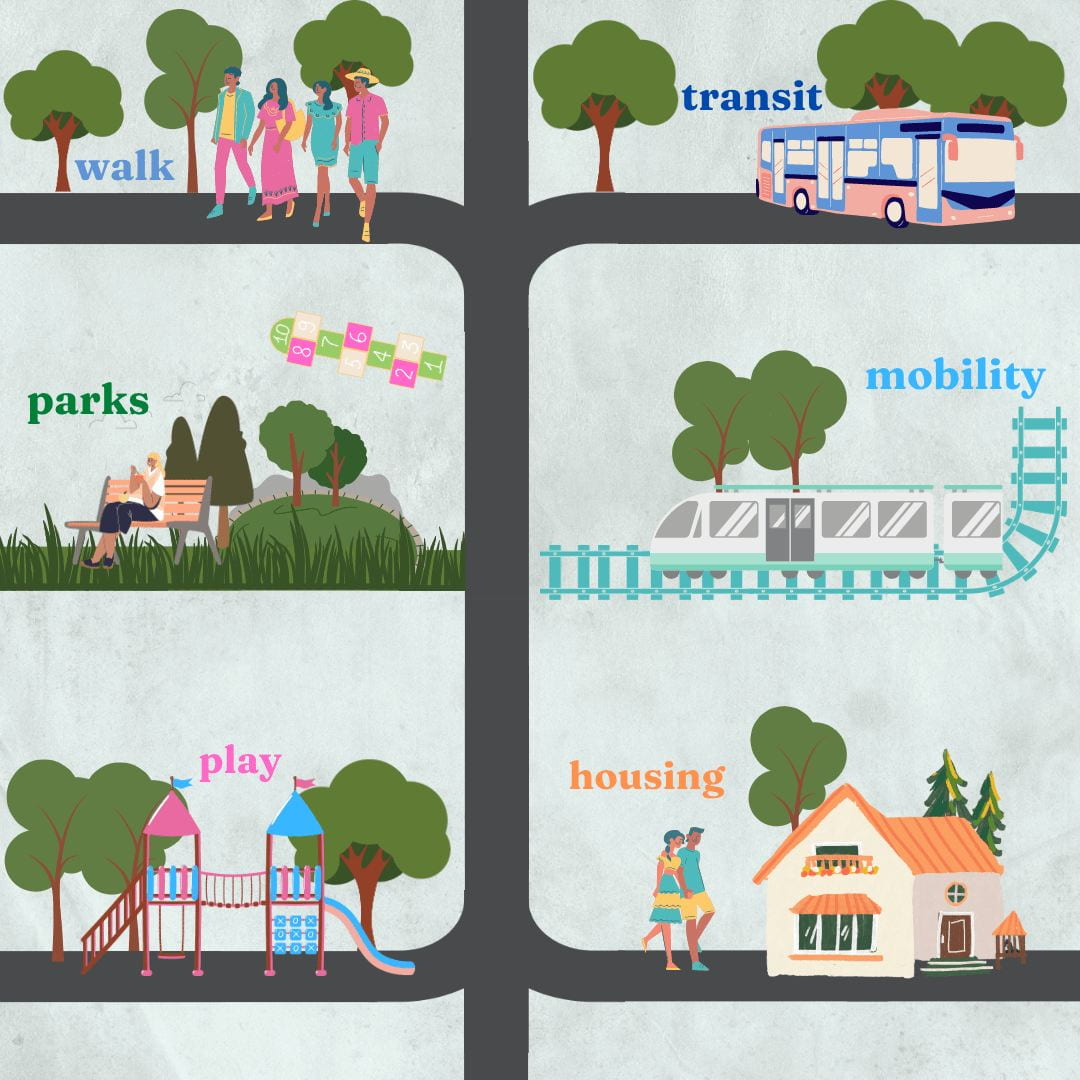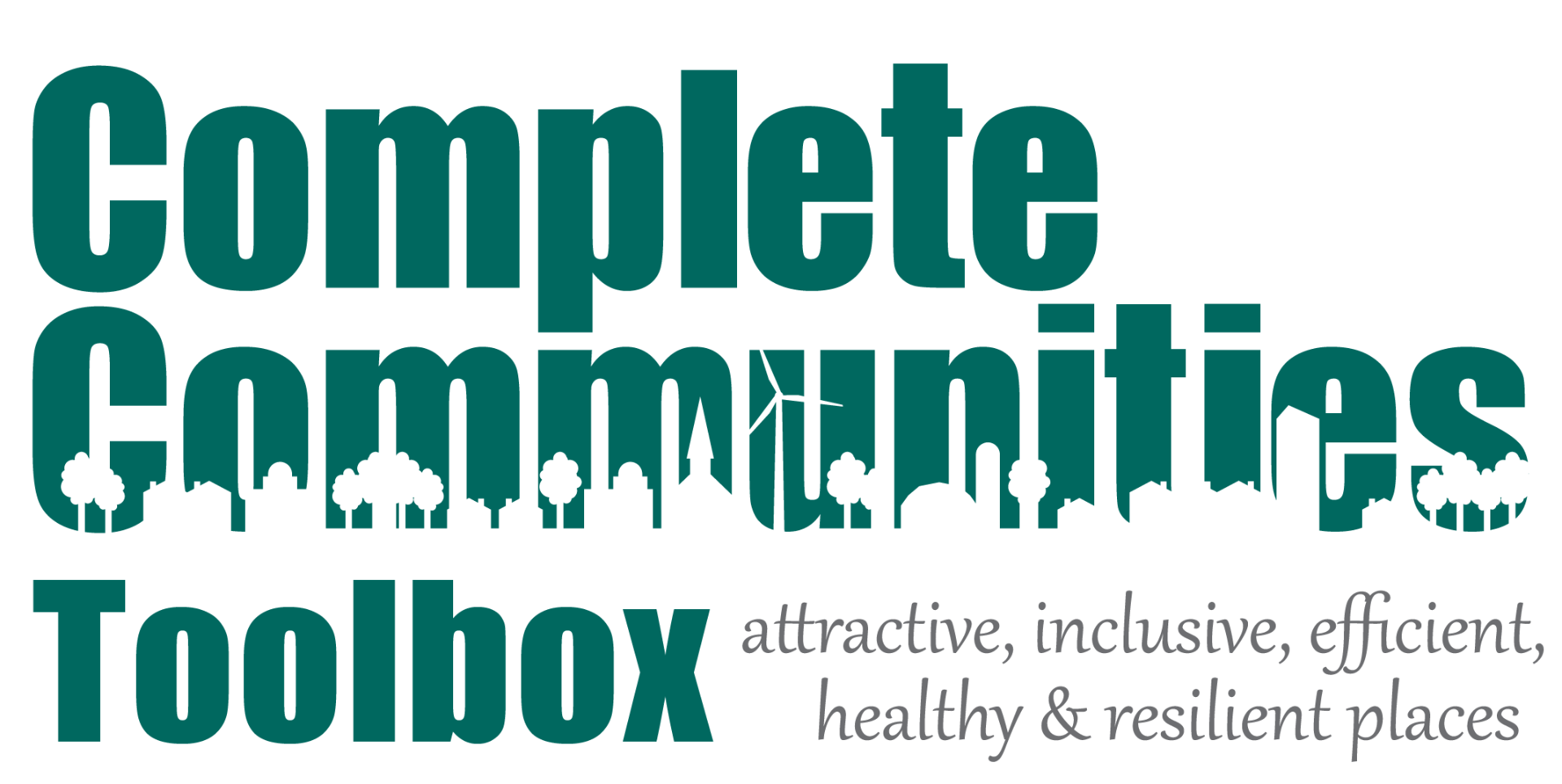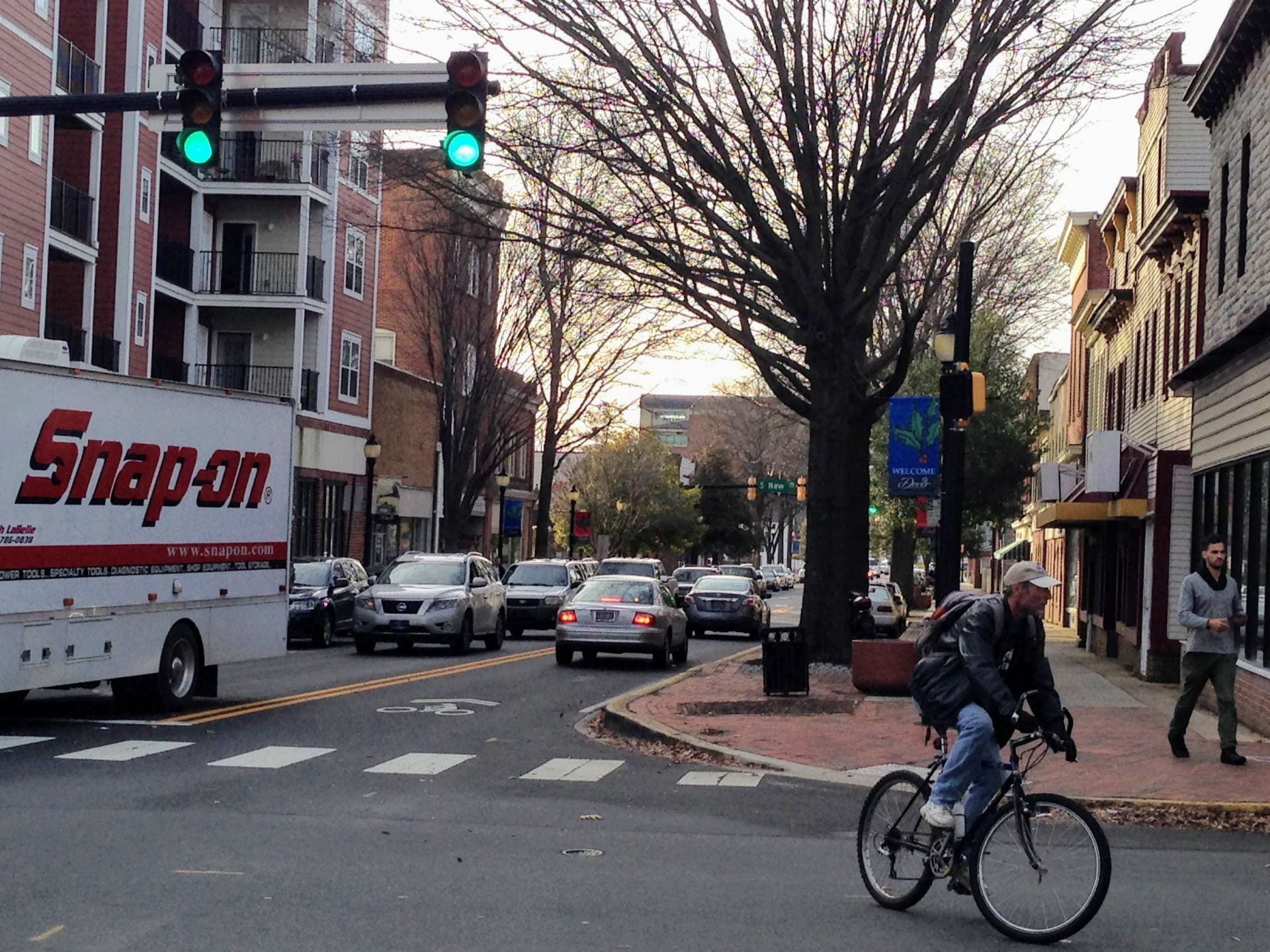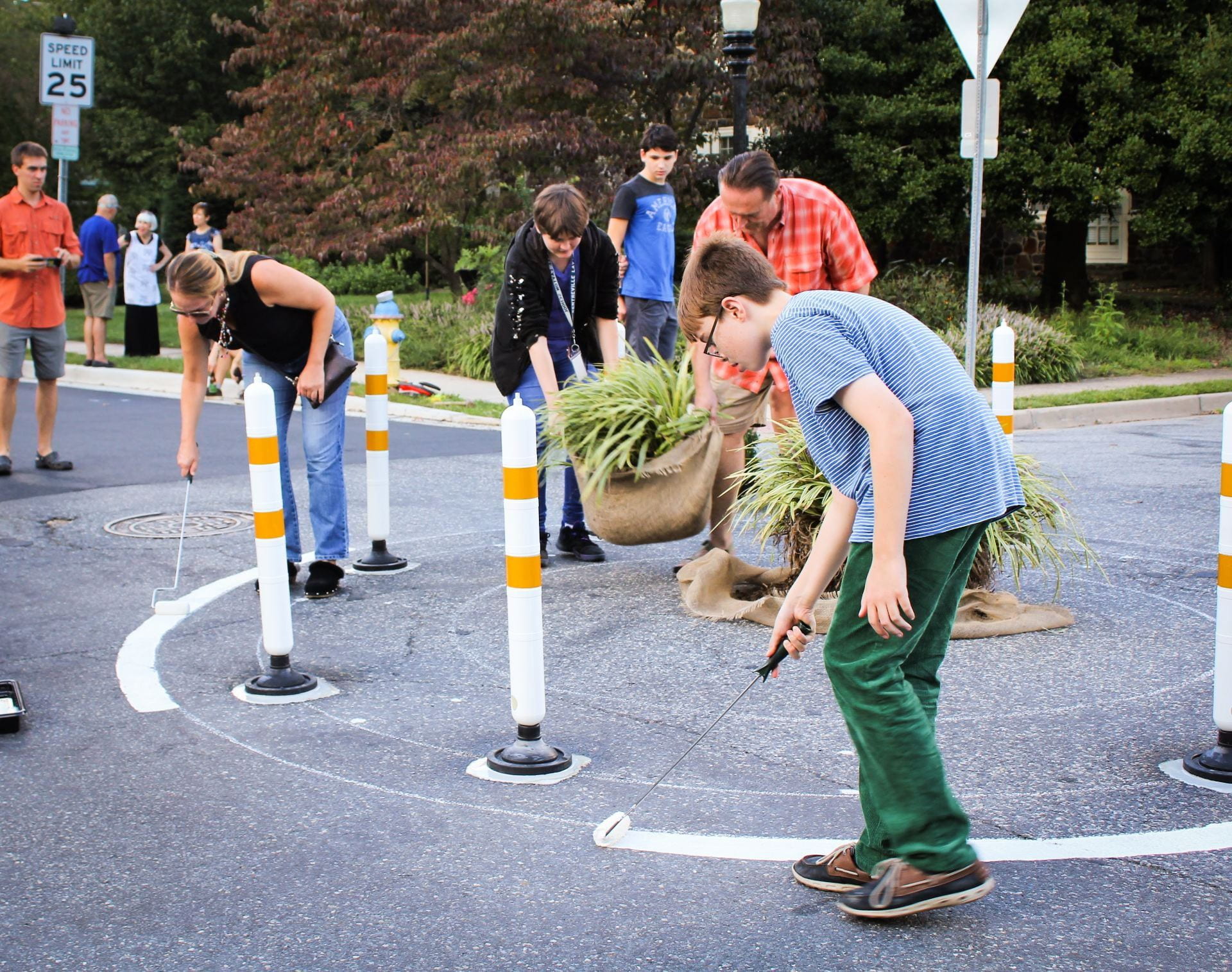TRANSPORTATION
Overview
Transportation strategies should include policies, statements, goals, planning components, and detailed maps. These items help to define any critical transportation issues within a community that can be addressed with plans followed by actions for improvement. All transportation Strategies should be created and implemented in close collaboration with DelDOT.
People of all ages, abilities, incomes, race, and ethnicities should have safe, comfortable, and convenient access to community destinations and public places—whether it be walking, driving, bicycling, rolling a mobility device, pushing a stroller, or taking public transportation. Unfortunately, many transportation systems are unbalanced and designed primarily for travel by motor-vehicles.
In partnership with DelDOT, local governments should create transportation strategies that improve existing transportation infrastructure by making it more accessible and supportive of the entire community.

Complete Streets
In accordance with Americans with Disabilities Act (ADA) requirements, complete streets are planned, designed, built, and maintained to safely accommodate travelers of all ages and abilities—motorists, pedestrians, bicyclists, and public transit users—including children, non-drivers, older adults, people who don’t own cars, and persons with disabilities. Aspects of planning for complete streets include:
- Road diets — roadway reconfigurations that narrow or eliminate travel lanes to calm traffic and increase safety.
- Placemaking — a multifaceted approach to the planning, design, and management of public spaces, capitalizing on a local community’s assets, inspiration, and potential, which requires supportive transportation strategies.
- Streetscapes — the natural and built fabric of the street and help define the design quality of the street and its visual effect. Streetscaping recognizes that a street is a public place where people can engage in various activities.
Transportation systems must consider the context or physical setting and use design approaches and materials that are consistent with local conditions.
Visualizing Complete Streets
While the majority (89%) of Delaware’s roadways are owned and maintained by the Delaware Department of Transportation (DelDOT), local government officials and “citizen planners” may wish to visualize how to balance the needs of all roadway users and transform existing roadways to complete streets.
By providing visual/graphic representations, local decision-makers can visualize how the existing transportation landscape can be retrofitted—during a future transportation improvement project—to become a complete street.
Planning for the Future
Transportation strategies impact various aspects of life including work commutes, school drop-off, garbage collection, parcel deliveries, transit, and more. Each community has its own specific transportation challenges regarding walkability, bike-ability, and accessibility. The planning stage for transportation is a discovery process that determines the goals of the community given its current infrastructure resources and it is established in coordination with DelDOT.
Municipal transportation planning is an involved, nuanced, and collaborative process that necessitates awareness of statewide and regional plans. These strategies do not happen in a vacuum and stakeholders need to be aware of DelDOT’s plans for the entire state and region. Other factors to consider include public transit goals from DART First State and neighboring municipalities. Coordination and communication are important for addressing a municipality’s ambitions of growth along with these various components.
Transportation strategies are often incremental and gradual. Careful planning and collaboration help to create successful transportation initiatives. Check out the plans and policies of local metropolitan planning organizations (MPO): WILMAPCO, Dover/Kent MPO, and Salisbury-Wicomico MPO.
Act & Implement
The act and implement stage of transportation applies the planning strategies from the discovery process. These actions can vary depending on the community and its desired outcome.
Input and participation from multiple stakeholders are important for successfully improving the transportation infrastructure of a community.
Most of this work cannot be done without the funding support from DelDOT. Collaboration and coordination with DelDOT are vital for implementing these actions.
Road Diets
Implementing road diets improves mobility and accessibility for all users, including pedestrians, bicyclists, and public transit riders.
Transportation Improvement Districts (TID)
The purpose of a Transportation Improvement District (TID) is to comprehensively coordinate land use and transportation within a specific geographical area. Reconnecting land use and transportation can lower infrastructure costs and foster planning for market-ready (re)development opportunities.
As a transportation-based impact fee, TIDs provide a way to equitably distribute the cost of development-related growth and infrastructure improvements to the private sector that benefits from the facilities.
Pop-up Demonstration and Pilot Projects
Reconfiguring roadways and public spaces can help calm traffic and achieve more walkable-, bikeable-, and activity-oriented places. But permanent, large-scale changes can be difficult to launch.
Often described as “tactical urbanism,” these pop-up demonstration and pilot projects are designed to provide low-cost, temporary built-environment changes that can transform public spaces to vibrant, activity-oriented destinations and calm traffic. For more information, visit the Living Lab.



